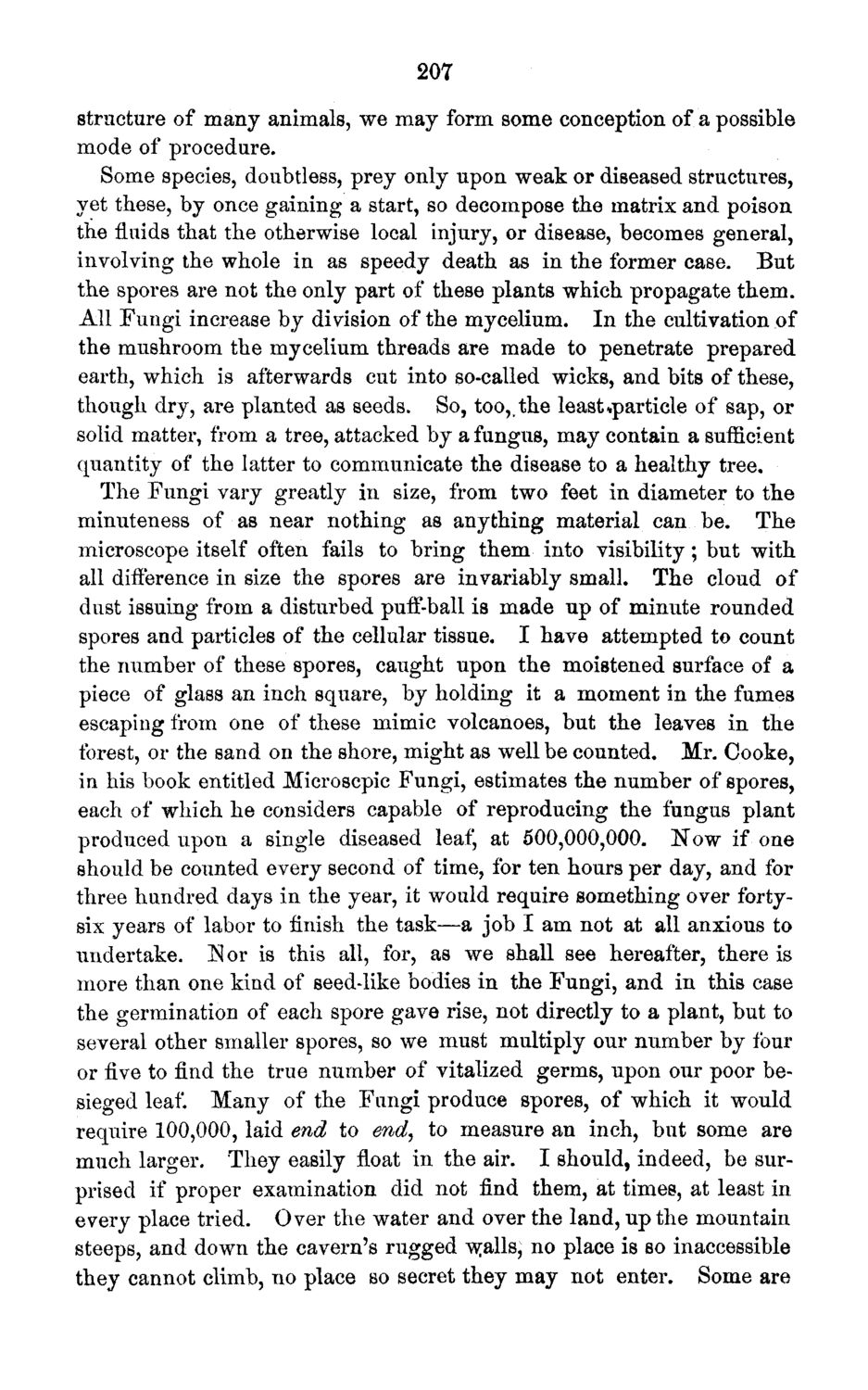| |
| |
Caption: Board of Trustees Minutes - 1871
This is a reduced-resolution page image for fast online browsing.

EXTRACTED TEXT FROM PAGE:
207 structure of many animals, we may form some conception of a possible mode of procedure. Some species, doubtless, prey only upon weak or diseased structures, yet these, by once gaining a start, so decompose the matrix and poison the fluids that the otherwise local injury, or disease, becomes general, involving the whole in as speedy death as in the former case. But the spores are not the only part of these plants which propagate them. All Fungi increase by division of the mycelium. In the cultivation of the mushroom the mycelium threads are made to penetrate prepared earth, which is afterwards cut into so-called wicks, and bits of these, though dry, are planted as seeds. So, too,,the least %particle of sap, or solid matter, from a tree, attacked by a fungus, may contain a sufficient quantity of the latter to communicate the disease to a healthy tree. The Fungi vary greatly in size, from two feet in diameter to the minuteness of as near nothing as anything material can be. The microscope itself often fails to bring them into visibility; but with all difference in size the spores are invariably small. The cloud of dust issuing from a disturbed puff-ball is made up of minute rounded spores and particles of the cellular tissue. I have attempted to count the number of these spores, caught upon the moistened surface of a piece of glass an inch square, by holding it a moment in the fumes escaping from one of these mimic volcanoes, but the leaves in the forest, or the sand on the shore, might as well be counted. Mr. Cooke, in his book entitled Microscpic Fungi, estimates the number of spores, each of which he considers capable of reproducing the fungus plant produced upon a single diseased leaf, at 500,000,000. Now if one should be counted every second of time, for ten hours per day, and for three hundred days in the year, it would require something over fortysix years of labor to finish the task—a job I am not at all anxious to undertake. Nor is this all, for, as we shall see hereafter, there is more than one kind of seed-like bodies in the Fungi, and in this case the germination of each spore gave rise, not directly to a plant, but to several other smaller spores, so we must multiply our number by four or five to find the true number of vitalized germs, upon our poor besieged leaf. Many of the Fungi produce spores, of which it would require 100,000, laid end to end, to measure an inch, but some are much larger. They easily float in the air. I should, indeed, be surprised if proper examination did not find them, at times, at least in every place tried. Over the water and over the land, up the mountain steeps, and down the cavern's rugged v^alls; no place is so inaccessible they cannot climb, no place so secret they may not enter. Some are
| |